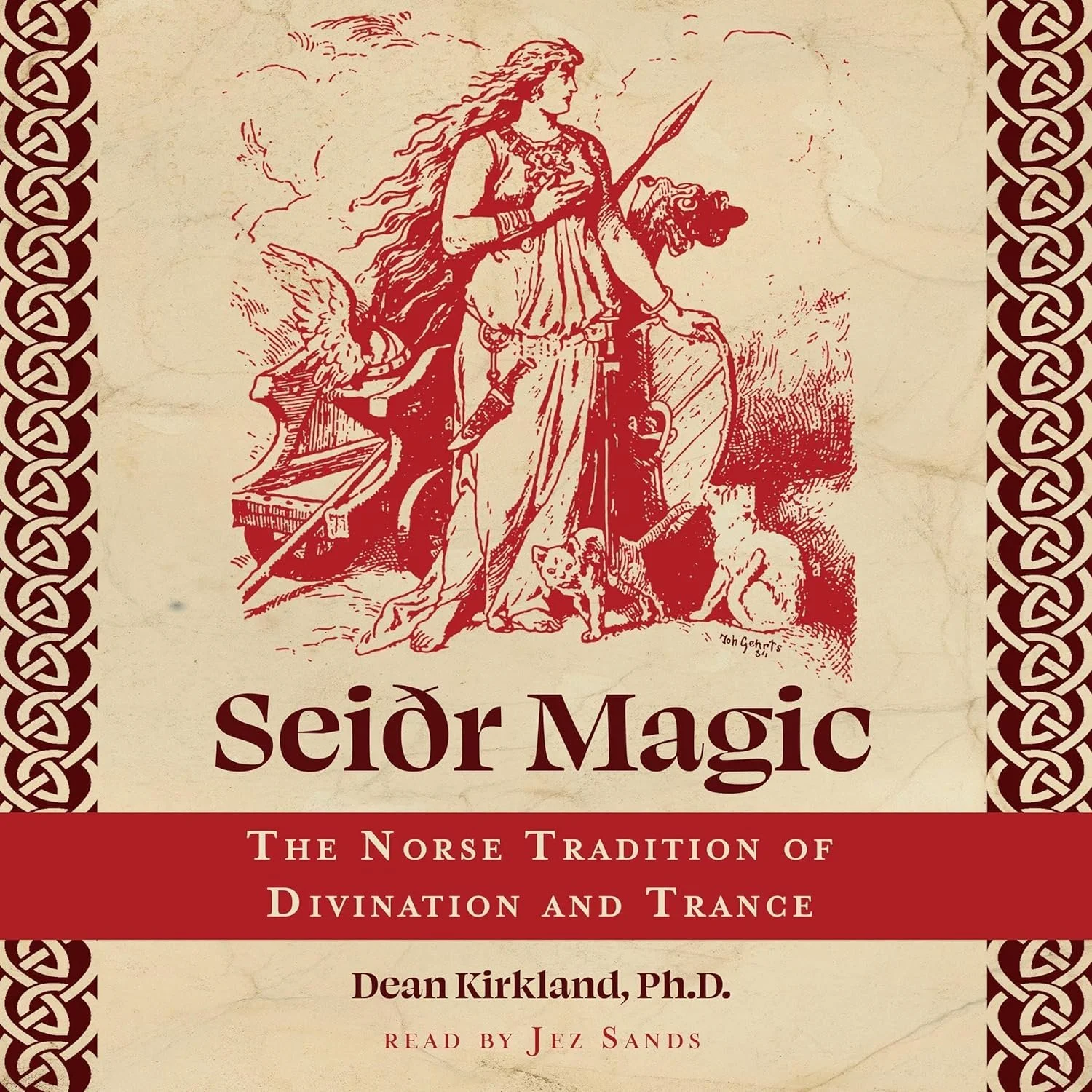Seiðr is an ancient form of Norse magic practiced during the Viking Age. The word is derived from Old Norse, meaning cord, string, or snare and is closely associated with shamanism.
Seiðr was primarily practiced by women known as völvas or seiðkonur, but men, including the god Odin, also practiced it despite facing social stigma.
The practice involved entering trance states to communicate with spirits, gods, and other entities, allowing practitioners to influence events in the physical world.
Despite attempts to suppress Seiðr during Christianization, it remained a part of medieval Scandinavian culture. Today, Seiðr has experienced a resurgence of interest among modern pagan and neo-shamanic traditions.
This book by a practicing “reconstructionist heathen”in England, Dean Kirkland, introduces the magical and shamanic techniques of the seiðr priest or priestess and explains how to explore Norse trance magic and mysticism.
“As a form of tribal shamanism, seiðr bears no relation to modern witchcraft,” Kirkland points out. “By looking at the archaeological evidence — the tools that seiðr-workers left behind — and the similarities between the Norse artifacts and the tools still used in other shamanic cultures today, we begin to get an idea of how seiðr may have been done.”
Seiðr rituals often involved entering altered states of consciousness through techniques like chanting, drumming, or consuming psychoactive substances. These rituals allowed practitioners to access hidden realms and communicate with various beings, providing them with knowledge and power to affect the course of events.

